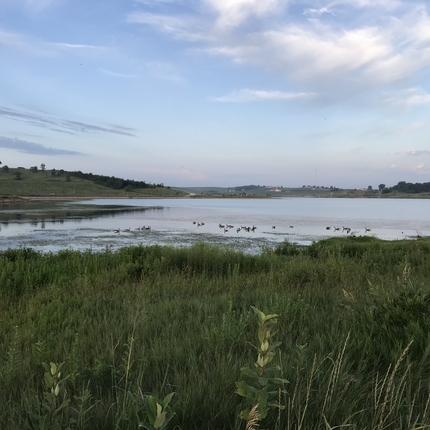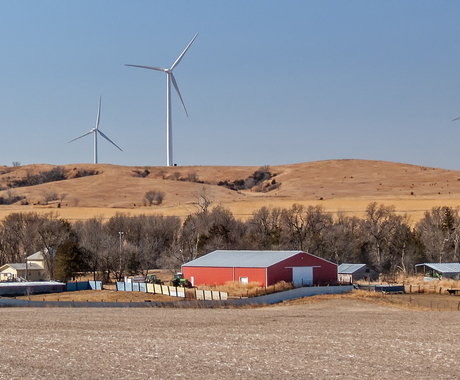This fall the Center for Rural Affairs will partner with the Nebraska Indian Community College to bring together farmers, community members, students, and instructors to raise awareness of, monitor, and take steps to improve water quality in Macy and Santee, Nebraska.
The goal is to bring water quality issues to public attention, change attitudes and behaviors toward the important natural resource of clean water for human consumption, and lay the foundation for looking at next steps rural communities can take to ensure clean water for themselves and future generations.
Specific project objectives include:
- Enhance community understanding of state and local water quality concerns and challenges.
- Enable student-scientists in 2 communities to monitor local surface water quality.
- Share results to create local and statewide awareness of community water quality challenges and best management practices to overcome those challenges.
Nitrate pollutants are created by overuse of chemical fertilizers and poorly managed animal waste leading to excess nitrogen creating toxic nitrate pollution in the water. This causes health risks.
Field crops, lawns, and livestock facilities are primary sources. This can happen anytime rainfall, snow melt, or excess irrigation flows over land and water picks up pollutants and deposits them into streams, lakes, and rivers.
Nitrates in drinking water can be hazardous to the health of pregnant women, nursing mothers, infant children, and the elderly. Methemoglobinemia, or “blue baby” disease, is a significant concern. Nitrates can also lead to uranium contamination, causing kidney damage and elevated blood pressure.
We don’t see this as a hopeless situation. Steps can be taken now to ensure citizen safety from harmful nitrates in the groundwater.
- Government agencies can test wells and monitor lakes, rivers, and streams as well as provide resources to invest in water quality improvement systems and share information about cleaning up waterways.
- Farmers can plant buffer strips that help prevent nitrogen from migrating, use cover crops to absorb nitrogen, and create land and farm management plans to reduce runoff and limit fertilizer application.
- Local citizens can make use of rain barrels and maintain vegetation near pavement and storm drains, dispose of household chemicals properly, and clean up after pets and animals and reduce use of chemicals on lawns and in homes.
Bacteria in water are another concern. Fecal coliform bacteria known as E. coli can occur in our water supply. Consuming contaminated water can result in stomach cramps, diarrhea, headaches, nausea, and vomiting. Possible long-term effects include cholera, intestinal infection, hepatitis, and kidney failure.
E. coli often enters the water supply via point-source pollution when water is contaminated by a point source that might be a pipe, a ditch, or a building. Improperly designed septic systems, sewage treatment plants, and livestock lagoons are common types of point sources that may lead to E. coli contamination. Private water supplies are not monitored and often not treated for E. coli contamination, which is colorless, odorless, and difficult to detect.
Agriculture runoff is a frequent source of E. coli contamination in rural areas. Pollution from pastures, fields, and livestock facilities is common. Steps farmers take to avoid contamination include: fencing off streams from livestock; managing manure application to avoid application when the ground is frozen, wet, or steeply sloping; and planting buffer strips using vegetation to separate stock from streams and other water bodies.





